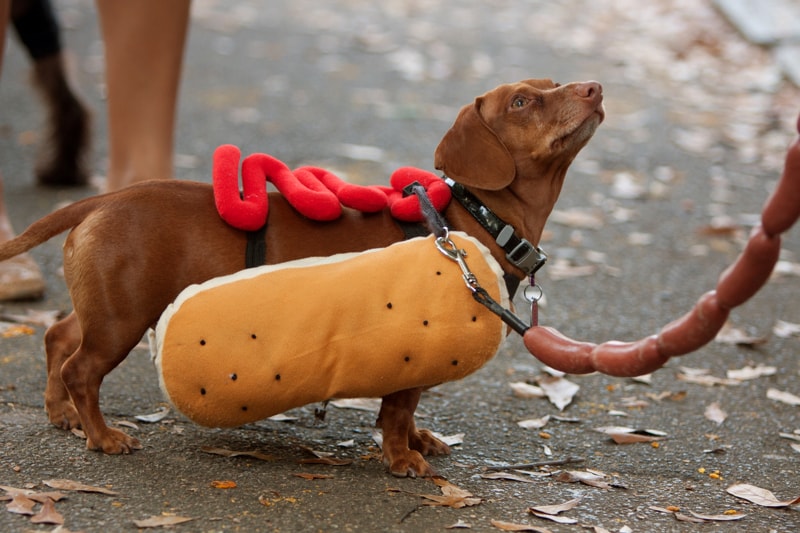Life Stages of a Cat
From a month-old kitten to a 12-year-old senior, cats have different care-taking needs throughout their various stages of life.
From witches and ghosts to vampires and skeletons, Halloween is a time for fun and fright. But the scary parts should never come at the expense of your furry family members. How can you protect your pal from the extra dangers lurking nearby?
Most people have heard that chocolate can be harmful to dogs. However, this sweet treat can be dangerous to both dogs and cats. It can cause vomiting, diarrhea, high blood pressure, seizures and other unpleasant symptoms. Chocolate poisoning can even be fatal in rare cases.
Additional foods to keep away from your pal include:
If you have human Halloweeners in your home, it’s a good idea to store their trick-or-treat candy up high and in a closed container. Remember, most pet pals are excellent hunters. If food is within reach, they will sniff it out. Keep an eye out for candy wrappers, too. Swallowing these papers or foils can irritate or even obstruct your li’l buddy’s gastrointestinal (GI) tract.
It’s important to act fast if you think your dog or cat has ingested something they shouldn’t have. Call the ASPCA Animal Poison Control Center at (888) 426-4435 or contact your veterinarian right away.

Some pets enjoy wearing clothing, while others feel stressed out by it. If you’re sure your furry friend is up for it, you can help avoid incident or injury by making sure their costume:
Even if your doggie or kitty is used to wearing clothing, it’s a good idea to try their costume on prior to the big night. Your pal will need some time to get used to the costume before they are surrounded by all the extra people and the excitement the holiday brings. If your pet seems at all uncomfortable during your dress rehearsal, it’s probably best to ditch the costume.
Seasonal décor can spruce up your home, but it can also lead to potential pet hazards. Be especially careful with:
You might also want to stay away from plastic skeletons and spiders, cobwebs, or other decorations that have small components your dog or cat could swallow.

It’s not uncommon for our canine and feline companions to feel anxious during trick-or-treat time. After all, the doorbell is ringing all night, and strangers dressed in bizarre clothing are coming and going.
Double check that your li’l buddy is wearing their proper, up-to-date identification (collar with ID tags). If your pet doesn’t have a microchip, the holiday season is a good time to consider it.
As a safety measure, you may want to prepare a list of emergency numbers to keep in plain sight, including:
Consider keeping your pet in a separate room away from the front door. If you do have your pal close by, pay them extra attention and make sure they don’t try to dart when the door opens. Even dogs and cats who are typically friendly with strangers can get spooked on Halloween.
Taking your pooch out for a festive evening walk? Use a reflective leash and, of course, check again that they are wearing proper ID.

When the big day comes, you’re bound to want to capture the moment – especially if your furry friend is wearing an adorable costume! Here are a few tips to help you take great pet pictures:
Just remember that no matter how prepared you are for the holiday, accidents can still happen. An ASPCA Pet Health Insurance plan can help cover the cost associated with your pal’s care. Is your pet covered? Get a quote today!

(opens new window)